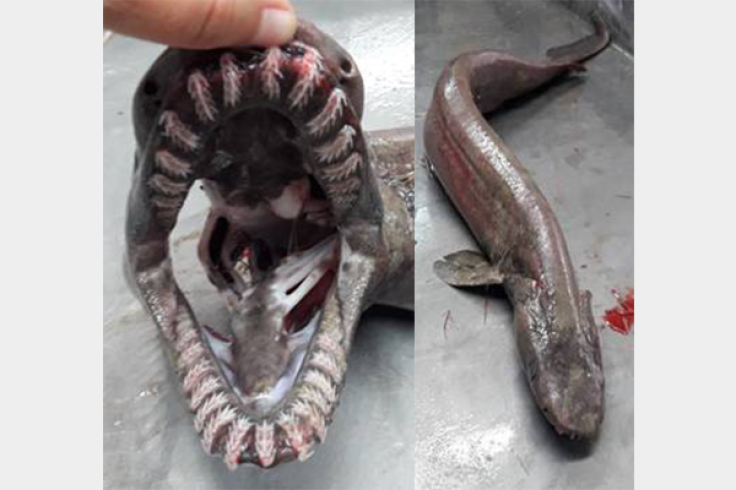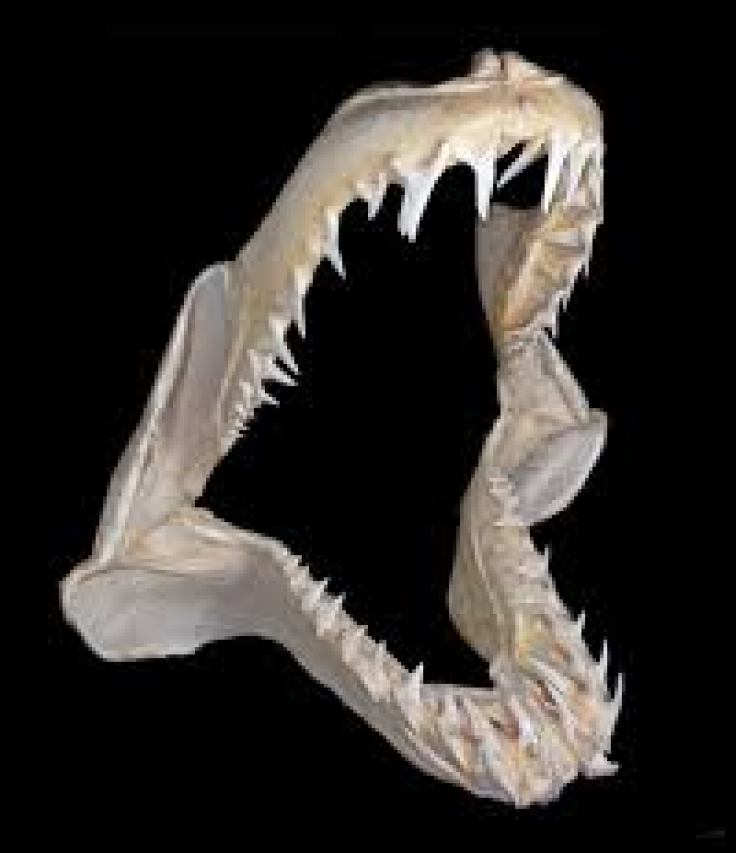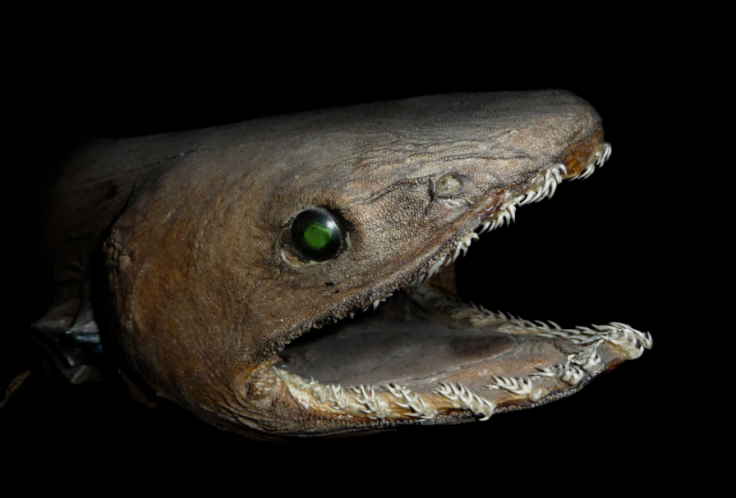Terrifying prehistoric 'snake shark' caught for first time

KEY POINTS
- The frilled shark - Chlamydoselachus anguineus - is one of the oldest animals on earth.
- It has been roaming the bottom of the sea for 80 million years, and inspired the sea serpent myth.
Scientists have captured an extraordinary prehistoric animal that still lurks the depths of the oceans and is as elusive as it is scary. The frilled shark – Chlamydoselachus anguineus – is often referred to as a "living fossil".
It has inhabited the planet for 80 million years, making it one of the few surviving species from antiquity. Its sharp teeth and flexible jaw suggest it be the inspiration behind the mythological 'sea serpent'.
EU scientists working off the coast of Portugal caught the toothy beast in a trawler net while carrying out research to "minimise unwanted catches in commercial fishing".
The Institute for Sea and Atmosphere said the male shark is 1.5m long and has 300 needle-sharp teeth in 25 rows.

Despite existing in large numbers across the Atlantic and Pacific Oceans, the species is spotted rarely because it dwells near the sea floor – the institute scooped up their find 700m below the water's surface off the coast of Portimao.
The frilled shark still retains many of its primitive features: it has a dark brown eel-like body with its dorsal, pelvic, and anal fins placed far back – it captures its prey by bending its body and lunging forward like a snake.
An even harder-to-spot cousin of Chlamydoselachus anguineus is Megachasma pelagios – or the megamouth shark – of which there have only been 63 confirmed sightings. A 15ft specimen washed up on the shore in the Philippines in 2015.
Portugal's Institute for Sea and Atmosphere is part of the Europe-wide MINOUW Project, which is made up of maritime science bodies from the continent, bringing together scientists, fishermen, NGOs and even policy makers.
It aims to develop and promote fishing technologies and practices that reduce unwanted catches, with the ambitious goal of completely eliminating discarded catches from European fisheries.






